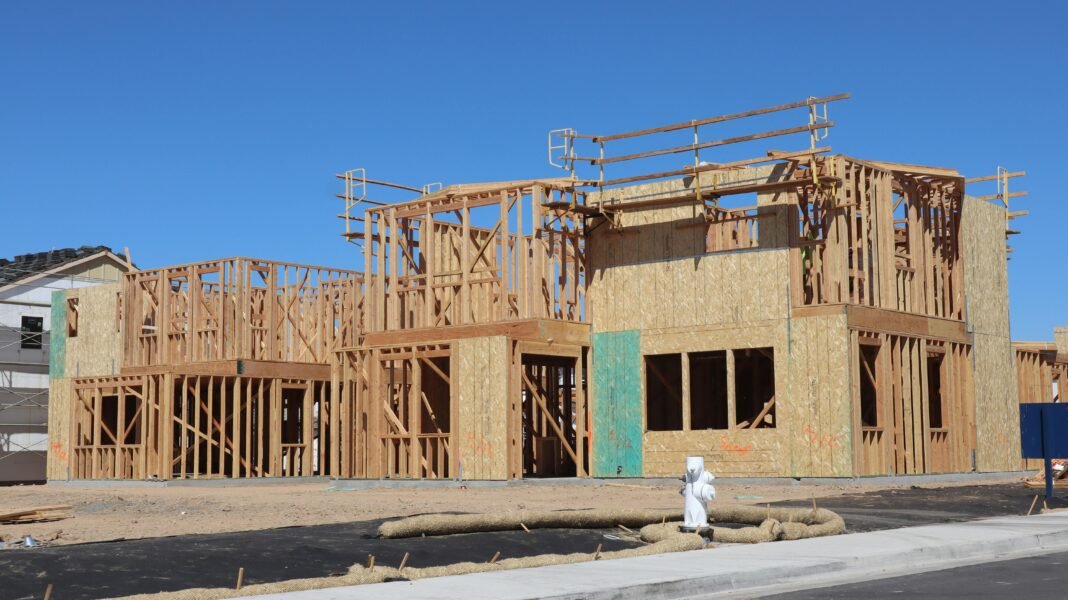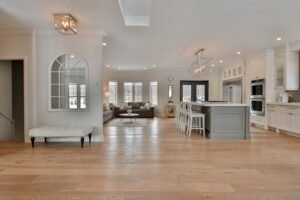Timber frame homes have captured the attention of homeowners who seek lasting durability and timeless beauty. Unlike conventional methods, these homes blend strength with sustainability, creating structures that endure for generations. Builders highlight timber’s natural resilience, flexibility, and environmental benefits as reasons behind their popularity.
Traditional construction often struggles with long-term maintenance and weather exposure, making timber frames an appealing choice. This article explores five compelling reasons why timber frame homes outlast traditional builds. From design efficiency to sustainability, timber frames consistently provide advantages that extend beyond surface-level aesthetics.
Structural Strength That Withstands Time
One of the main reasons timber frame homes outlast traditional homes is their structural strength. Large beams are used instead of smaller studs, which distribute weight more effectively. This allows timber frames to carry heavy loads without shifting or weakening under stress. Traditional homes often face structural settlement, while timber frames maintain alignment for decades.
The use of heavy timber provides unmatched resistance against environmental stressors. Snow loads, high winds, and seismic activity place minimal strain on timber beams compared to conventional framing. Traditional builds often need reinforcements and frequent repairs to achieve similar durability. Timber homes, however, rely on the natural strength of solid wood for stability.
According to Hamill Creek Timber Homes, timber frames are built with precision joinery and designed to endure for generations. Their natural strength ensures long-term stability, reducing the risk of settlement or major structural compromise. This information highlights why timber homes consistently provide safety and resilience beyond what traditional methods can achieve.
Superior Resistance Against Environmental Damage
Timber frame homes excel at resisting environmental damage, a challenge that traditional homes often fail to manage effectively. Solid timber is less vulnerable to moisture penetration compared to hollow wall systems. This reduces mold growth, material breakdown, and long-term deterioration in high-humidity environments. Timber structures maintain integrity even when exposed to adverse weather.
Fire resistance is another notable advantage. Heavy timber chars on the surface, creating a protective layer that slows fire penetration. Traditional homes built with smaller materials burn faster because structural elements fail sooner. Insurance providers often acknowledge timber frames’ resilience when calculating homeowner coverage costs. This makes them safer investments.
A 2023 report from the National Association of Home Builders revealed that wood framing remained dominant in U.S. housing. Nearly 93% of single-family homes completed that year used wood. Concrete made up only 7%, while steel accounted for less than 1%. These findings suggest timber’s proven reliability against environmental stress continues to drive widespread adoption.
Energy Efficiency and Long-Term Savings
Energy efficiency is another key factor driving the longevity of timber frame homes. Solid wood naturally insulates indoor spaces, helping maintain stable temperatures. This lowers reliance on heating and cooling systems, extending their service life. Traditional builds often require artificial insulation, which can degrade and create efficiency gaps over time.
Timber frame designs also allow open layouts and large windows without compromising strength. This creates opportunities for passive solar heating, natural ventilation, and consistent interior comfort. Over the decades, these designs have reduced energy costs significantly compared to conventional homes. The long-term savings encourage homeowners to maintain timber structures more diligently.
According to the information on the website of Wisconsin Public Radio, mass timber offers significant labor cost reductions. Depending on the project, some mass timber buildings need only about one-quarter of the typical construction workforce. Long-term cost reduction ensures homeowners reinvest in upkeep, leading to even longer-lasting structures. Energy efficiency directly supports durability and homeowner satisfaction.
Design Flexibility That Enhances Durability
Timber frame homes provide exceptional design flexibility compared to traditional construction methods. Large beams allow for open spaces without interior load-bearing walls. This creates layouts that adapt easily to changing family needs over time. Flexible designs reduce the need for costly renovations, helping homes last longer with minimal structural changes.
Adaptability also ensures that homes can incorporate new technologies and materials as they evolve. Traditional homes often face limits when adding energy systems or modern upgrades. Timber frame structures accommodate updates with less disruption to existing frameworks. This adaptability extends lifespan while enhancing homeowner satisfaction.
A 2023 MDPI study reviewing 60 modular timber building projects demonstrated the versatility of volumetric modular timber design. The findings revealed that modular units of similar size could be reused across different projects while supporting flexible design functions. This demonstrates how timber construction not only enables adaptability but also strengthens durability by aligning with circular economy principles.
Sustainability That Supports Longevity
Sustainability plays a vital role in why timber frame homes endure longer than their traditional counterparts. Timber is renewable when sourced responsibly, unlike concrete or steel. Building with timber lowers environmental impact while producing stronger and more sustainable housing. Homes built with renewable materials are more likely to remain functional for generations.
The carbon storage capacity of timber further strengthens its environmental value. Each beam captures and stores carbon dioxide, offsetting emissions from construction activities. This sustainable cycle reduces ecological harm and increases the long-term appeal of timber structures. Traditional materials often generate higher emissions with limited renewal opportunities.
A 2023 study in ResearchGate confirmed that timber construction reduces greenhouse gas emissions significantly, making it a highly sustainable material. The research also proposed timber as a solution to climate change. The research emphasized timber’s carbon storage ability, renewable qualities, and contribution to the circular economy in building design. These findings highlight timber’s role in creating resilient homes that support environmental goals and long-lasting performance.
Frequently Asked Questions:
1. Are timber frame homes more expensive to build than traditional homes?
Timber frame homes often have higher upfront costs due to specialized construction methods and materials. However, long-term savings through energy efficiency, reduced maintenance, and extended lifespan offset these expenses. Over decades, timber homes often prove more cost-effective than traditional builds, providing both durability and financial advantages for homeowners.
2. Do timber frame homes require more maintenance than other homes?
Timber frame homes require regular but simple maintenance, such as sealing exposed wood and inspecting for pests. These steps are straightforward compared to the frequent repairs needed for conventional materials. With consistent upkeep, timber homes resist structural issues and preserve their natural beauty. This contributes to their long-lasting performance across generations.
3. How environmentally friendly are timber frame homes?
Timber frame homes are considered highly environmentally friendly due to renewable materials and carbon storage capacity. When sourced responsibly, timber supports sustainable forestry and reduces reliance on energy-intensive materials. Combined with energy efficiency, timber homes minimize environmental impact. Homeowners gain durable, eco-conscious structures that support modern sustainability goals without compromising comfort or design.
Timber frame homes consistently outlast traditional construction through strength, efficiency, resistance, and sustainability. They offer homeowners resilience against environmental stress and economic strain. Supported by modern research, their benefits extend beyond durability alone. From carbon storage to energy efficiency, timber frames align with both personal and ecological goals. Choosing timber construction ensures long-lasting performance, beauty, and value.


